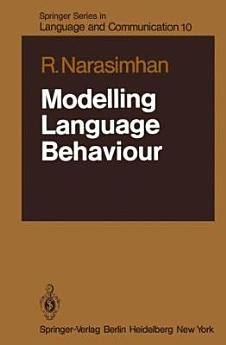Modelling Language Behaviour
มี.ค. 2013 · Springer Series in Language and Communication หนังสือเล่มที่ 10 · Springer Science & Business Media
eBook
220
หน้า
reportคะแนนและรีวิวไม่ได้รับการตรวจสอบยืนยัน ดูข้อมูลเพิ่มเติม
เกี่ยวกับ eBook เล่มนี้
This book studies language behaviour in the larger context of modelling or ganismic behaviour more generally. It starts out from the basic premise that what is characteristic of organismic behaviour is that an organism uses its behavioural acts to accomplish something in its interactions with the world in which it finds itself. These two features, that an organism has a behav ioural repertoire and that it deploys specific behavioural acts from its repertoire in an intentional way, define the agentive nature of an organism. The study of organismic behaviour, then, must primarily concern itself with this agentive aspect of an organism and determine what structures and proces ses underlie these intentional organismic acts. We should be able to say what primitive structures and what primitive processes put together in what ways can give rise to the kinds of behavioural acts an organism engages in. Any explanation of behaviour that we formulate in terms of underlying structures and processes must be testable and must be consonant with the observed pheno menological aspects of such behaviour.
ให้คะแนน eBook นี้
แสดงความเห็นของคุณให้เรารับรู้
ข้อมูลในการอ่าน
สมาร์ทโฟนและแท็บเล็ต
ติดตั้งแอป Google Play Books สำหรับ Android และ iPad/iPhone แอปจะซิงค์โดยอัตโนมัติกับบัญชีของคุณ และช่วยให้คุณอ่านแบบออนไลน์หรือออฟไลน์ได้ทุกที่
แล็ปท็อปและคอมพิวเตอร์
คุณฟังหนังสือเสียงที่ซื้อจาก Google Play โดยใช้เว็บเบราว์เซอร์ในคอมพิวเตอร์ได้
eReader และอุปกรณ์อื่นๆ
หากต้องการอ่านบนอุปกรณ์ e-ink เช่น Kobo eReader คุณจะต้องดาวน์โหลดและโอนไฟล์ไปยังอุปกรณ์ของคุณ โปรดทำตามวิธีการอย่างละเอียดในศูนย์ช่วยเหลือเพื่อโอนไฟล์ไปยัง eReader ที่รองรับ







